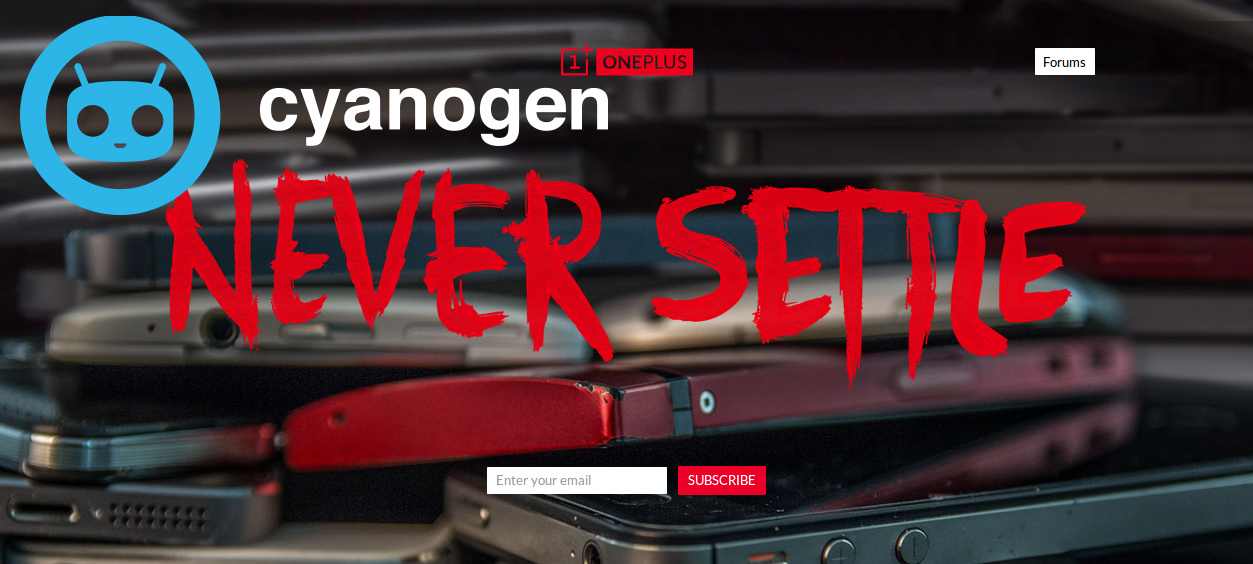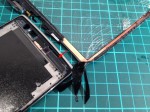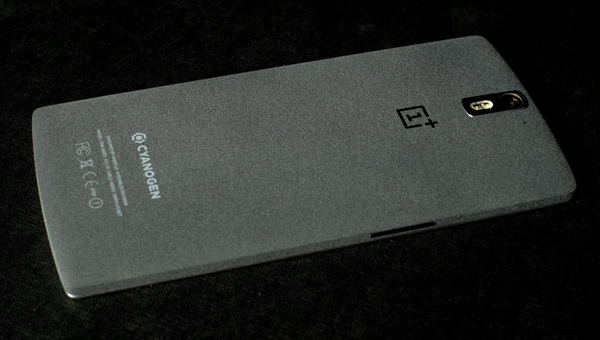
OnePlus has been involved in more than their fair share of controversy in their short lifespan, and we thought it was time to check in on some of the recent developments surrounding the company.
The good news? After a disastrous first attempt at running a pre-order system for the OnePlus One, the company finally managed to open up pre-orders successfully earlier this month, and then ran a Black Friday sale where – for 72 hours – you could straight up buy the phone without an invite or preorder and it would ship within 5 days.
The good news ends there, though. This continuing progression by OnePlus belies the other issues it has recently become embroiled in.
Touchscreen is / isn’t fixed
While OnePlus’ recent updates appear to have fixed the touchscreen issues, a segment of the user base is still reporting that the issue hasn’t gone away, with user vantt1 adamant that this is actually a hardware issue and following up with a deeper investigation. He says he disassembled his phone (so don’t try this at home) and found that adding insulation to the digitiser fixed his touch detection issues. His hypothesis is that OnePlus/Oppo used glue to insulate the digitiser instead of a double sided tape. That would explain why some have this issue and others don’t, as the amount of glue used may vary from one phone to another.
OnePlus took the opportunity to explain where they’re at with the touchscreen issue in general in a post on Reddit titled “Touch Screen Issues – We’re Listening”:
A few months ago, we became aware that some users were experiencing problems with their touch screen and immediately investigated the possible cause. After multiple hardware tests at our factory and troubleshooting with our partners at Synaptics and Cyanogen, we determined the best solution would be a software update. While a recent update proved a successful fix for a vast majority of affected users, some of our fans are still having trouble.
OnePlus says their engineers have performed the same experiment as “vantt1” but were “unable to reproduce the touchscreen issues on a hardware level, in regards to the suggested problem”. They believe that the insulating tape did fix the user’s issues but do not believe that is the cause of the touchscreen issue for a majority of users. They’re “still taking this issue very seriously,” and “are currently running further tests involving static electricity” (sounds exciting!).
Watch this space is all I can say – OnePlus has promised to keep the community updated with any progress in this area. My own touch response issues – which occurred since I unpacked the phone on day one – were fixed to near perfection by the latest firmware upgrade. I’ll continue to keep a close eye on this, as I know how frustrating the issue can be for a user. OnePlus deserves some credit for getting onto the front foot for once, getting involved in the discussion instead of letting rumour and conjecture spiral out of control.
Refurbished Units
A different chapter of the OnePlus saga has emerged. User ‘chopchopw’ posted back in July that he thinks he received a refurbished phone to show that several users have been sent used or refurbished units instead of the new phones they had purchased. The thread seemed to begin with someone wondering if OnePlus would start to sell refurbished units, but has turned into yet another firestorm of controversy over the last week.
For OnePlus’ part, the claim has been denied on both Reddit and directly in the thread:
We do not send refurbished units as new. In fact, we don’t even refurbish units or offer refurbished units for sale. We are checking with our warehouse now to find out if they have sent out any returned units by mistake, and rest assured that we are very aggressively working towards a conclusion.
While an occasional mistake may happen, I wonder if some of these issues occurred as a result of users not buying from the official store. Either way, the issues seems to be not entirely OnePlus’ fault although you could look at it from a slightly different point of view – if OnePlus has enough of these phones to sell to these other sellers, why don’t they have enough to sell directly to users and avoid these issues altogether? If a buyer didn’t have to go through a third party it would cut out the middleman and most likely any chance of this happening. OnePlus said in the beginning that they would not sell through resellers or distributors, but have created exactly that situation by limiting availability of the phone so much for international purchasers.
OnePlus says they’re investigating the occurrences of used phones being sent out as new, so we’ll also keep you updated with this is they ever get to the bottom of it. Hopefully, they learn their lesson and sell to actual enthusiasts who want the phone instead of on-sellers like those on Aliexpress where there are hundreds of ads for the OnePlus One.
The Cyanogen Love Triangle
Not enough controversy for you? OnePlus has announced their intention to sell the phone in India, but came up against a roadblock in the form of Cyanogen Inc – their own software supplier. Cyanogen just this month inked an exclusivity deal with Micromax in India, where they’ll be competing with Android One handsets at the low end of the market. This seems to have come as a surprise to OnePlus, and has created what could be an unfixable chasm between the two companies.
OnePlus took to their blog to explain the situation – itself is a weird thing to do, further widening the chasm between the two companies:
OnePlus and all of our partners, including Cyanogen, have put countless hours of work into making this launch a success. Just last month, on October 7, Cyanogen released the 38R OTA update which included SAR values inside phone settings to comply with Indian regulations. Therefore, it was surprising and disappointing to hear from Cyanogen on November 26 that they had granted exclusive rights in India over the Cyanogen system to another company. Prior to this, OnePlus and Cyanogen have successfully cooperated to release the OnePlus One or carry out commercial operations in 17 countries and regions (including India). It is truly unfortunate that a commitment we both made to our Indian users will now not be upheld. – See more at: https://oneplus.net/blog/2014/11/a-letter-to-our-indian-users/#sthash.uDow2I8s.dpuf
On the face of it, OnePlus really seems to have thrown Cyanogen under the bus. It’s difficult to know exactly what occurred, but if Cyanogen did in fact know about OnePlus’ forthcoming expansion into India – which OnePlus seems to think the October software update proves – then it’s extremely poor form on their part to sign an exclusivity deal with another company to effectively block that expansion. Then again, adding SAR values to comply with Indian regulations doesn’t necessarily indicate future expansion plans.
There’s also some thought amongst the Ausdroid team that Cyanogen inking an exclusivity deal for India with a single manufacturer might do the company a disservice in the future, in general.
OnePlus seems to be moving forward and laying groundwork for the future – it just might not be quite what we expected. Rumours of OnePlus developing their own Android build may also have caused Cyanogen to look elsewhere instead of being caught short. On their blog, OnePlus confirmed the existence of their own Android iteration:
Over the past year, we’ve often reflected on ways to better serve both. Those reflections led us to start developing our own Android team, as we’ve previously announced. That team was put in place originally to build the software which would power our future devices. So, though it’s not what we originally planned, we have shifted engineering efforts to the OnePlus One upon hearing this news. According to our current estimations, we’ll be able to release our first community build to our Indian users next month and have a production-ready build in February.
The OnePlus ROM will be based on Lollipop and is expected to be lightweight and bloat-free. I would expect a build very similar to an AOSP stock ROM – something the company did make available back in July for the One. OnePlus says they “have no plans of departing from Material Design nor adding unnecessary customisations”. They are committing to two years of software support for the ROM on the Indian OnePlus One, beginning with their community build coming in December. We can only hope that they stick to open source principles and allow the community to help improve their ROM in ways they are unable to.
With the price of other flagship phones still sitting around double the price of a OnePlus One, even with these seemingly soap-opera-level issues, the phone in my opinion remains the one of the best available.
Do you own a OnePlus One? What’s your take on the latest developments with the company and its partners? Have these issues affected you or dimished your faith in the company? Tell us in the comments.









This phone isn’t compatible with our 700MHz networks being rolled out by Telstra/Optus, or the 4G 850 rolled out by Vodafone.
If you want a cheap outright android handset there are far better models to buy IMO – Kogan Agora 4G+ for example.
I have this phone. It is the best Android phone I have owned. I think management and marketing is completely bungled. The marketing gimmicks, inability to produce sufficient stock and lack of globalization considering the ship from China model. I believe there is a lot more to the rift with CyanogenMod that the public is not privy too. This split hurts them internationally as other China based manufacturers do not do a great job of internationalizing their ROMs. This was the benefit of OPO over Meizu or Xiaomi etc. I will try another China based phone next. Scott have you… Read more »
I agree with everything you said Damien. IT is such a pity all the issues as this is a damn good phone when it’s working fully. Check out my Meizu MX3/Flyme review for a decent Chinese option. The MX4 Pro is looking the goods and I know a friend who swears by his MX4. As for battery, definitely a decrease lately- I run a custom ROM based on AOSP but most kernel code comes from CM anyway so it’s similar anyway – from what I hear the decrease in battery life is due to the touchscreen firmware changes, trying to… Read more »
Thanks for replying. I figured the battery performance drop was tied to the screen fix. I read all articles on this site including the review. Thanks for the effort. My preference would be to get a Snapdragon phone hence Xiaomi Mi4 is the best option. Also why OPO was low risk in my mind. For community ROM support possibilities. MX4 is a Mediatek so ROMs are not doable due to closed source. The better Mediatek phone is the Vivo XShots, the third BKK brand after OPPO and OPO. MX4 Pro being an Exynos processor may work. I bought a CubeTalk… Read more »
For a phone with the slogan “Never Settle”, there have been more issues than any other Android phone in history. From memory, it was April when it was announced and it’s still not widely available, and it’s still plagued with issues. Why would anyone bother now that its hardware is no longer cutting edge?
Price. That’s got to be the only remaining reason I can think of… Especially with all the latest flagship phones getting more expensive, including the Nexus 6.
Though I wonder if you’d be better off with one of the other previous model flagships from other manufacturers (Note 3, S5, Z2, etc) to get a good phone for less.
When someone gets a fully functional phone it is an awesome phone- now that my touch issues are fixed its amazing. Phil from Ausdroid loves his and has never had any touch issues on his.
BUT the big attraction is price- it can land on your door, using a mail forwarder for around $450AUD, compared with $900 for a Nexus 9 it’s not a really hard sell.